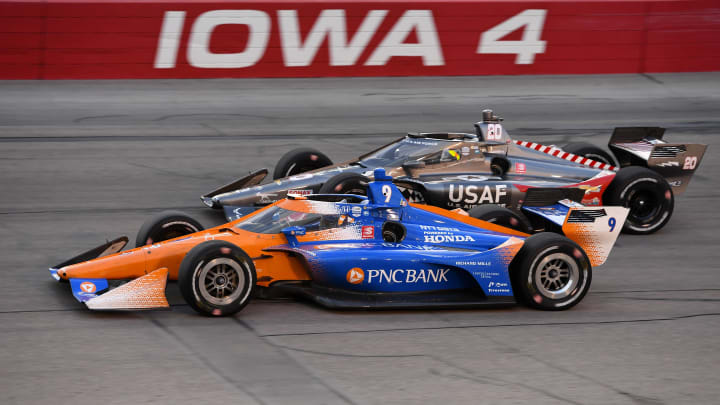IndyCar Makes Last-Minute Adjustment For Iowa

IndyCar has announced a 10 percent reduction in downforce, equivalent to 450 lbs, for all cars participating in this weekend's Hy-Vee doubleheader at Iowa. This decision follows the recent weight increase of 105 lbs and the repaving of the 0.875-mile oval at Iowa Speedway.
To determine the optimal downforce reduction, IndyCar conducted extensive testing last week at Iowa Speedway. Utilizing electronic load sensors in the suspension pushrods of the Dallara DW12s, the series measured the forces experienced in high-speed corners. The tests revealed that a reduction of 450 lbs of downforce was the ideal adjustment to balance performance and safety.
Revealing the details of the test, IndyCar’s director of aerodynamic development,
Tino Belli told Racer.com:
“We’re limiting the rear wing level to hole three of six with a wicker.
“Which is 10 percent less downforce, about 450 lbs less. We typically adjust downforce in 10-percent increments. The (3/8th-inch tall) wicker has always been optional, so it’s still optional if they want to go lower on downforce.
“At the test, we did warn the teams that we might come back with this wing setting, so we suggested that they try it and make sure they know what to do with this wing setting.
“We’ve got to make sure we don’t overload things on the car, so we’re just trying to keep the loads down to a nice, safe level.”
The reduction in downforce offers a notable benefit for drivers this weekend - improved tire life due to increased lifting in the corners. This enhancement is made possible by IndyCar’s implementation of its road course front wings and most of its road course rear wing package.
Apart from the reduction in downforce, Iowa also marks the first hybrid oval race for IndyCar, introducing a new era of racing technology to the series. IndyCar established a per-lap limit of 105 kilojoules of hybrid energy expenditure heading into the event. Teams utilized this limit during testing, and their reports indicated that the 105 kJ limit resulted in approximately three seconds of added 60 horsepower during laps that averaged around 17 seconds.
